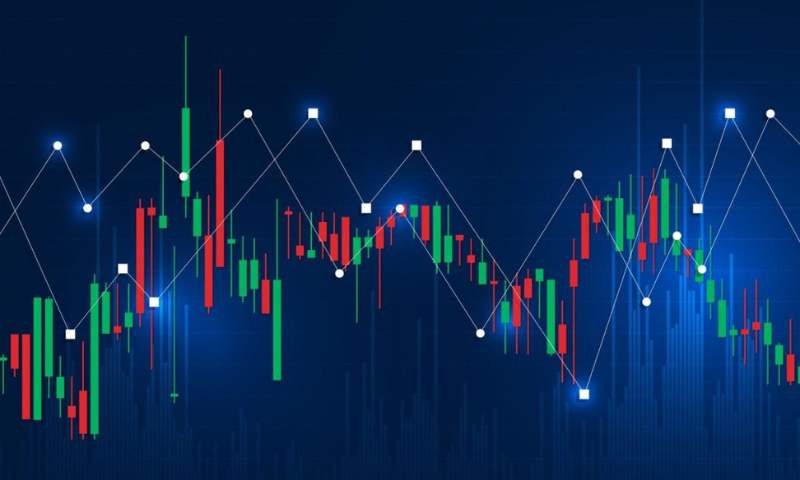Diving into Basic Technical Analysis for Beginners feels like uncovering a secret map to treasure—only your treasure is smarter investing. If you’re just stepping into the stock market’s vast ocean, knowing how to read the stars might just steer you clear of trouble. You’ll learn to understand the whispers of charts and hear what they reveal about future market swings. But where do you start? Right here! This is your no-nonsense guide to cracking chart patterns, using indicators to your advantage, and building a strategy that keeps your portfolio growing and your mind at ease. Say goodbye to guesswork and hello to confidence in your trades. Let’s chart your way to becoming a savvy investor.
Understanding the Basics of Technical Analysis
Grasping Technical Analysis Introduction and the Role of Charts
Let’s dive into technical analysis and why charts matter a lot. Charts show us stocks’ past moves. They help us guess future prices by finding patterns. Think of them as a storyteller. Charts tell where stocks have been. This way, we spot trends. Trends show us if prices may go up or down. We call rising trends bullish and falling trends bearish.
Now, let’s make reading charts fun and easy. Imagine a chart as a map. Just as maps guide us on roads, charts guide us in the stock market. On this map, we see hills (high prices) and valleys (low prices). Our aim here is to know when to ride the hill or avoid falling into a valley.
Deciphering Candlestick Patterns and Price Action Basics
Next up are candlestick patterns. These look like candles, true to their name. Each candle gives us clues about price moves. They can say whether buyers or sellers are stronger now. A green candle means prices closed higher than they opened. A red one means just the opposite.
Candlesticks help us with price action. Price action shows us how prices move over time. It’s like watching a dance, seeing who leads – buyers or sellers. When lots of green candles pop up, buyers lead the dance. If red candles take over, sellers are in charge.
Spotting candle patterns needs skill and practice. Spotting a bunch is key – one candle doesn’t tell much. But a group can shout out, “Heads up! Prices may shoot up or tumble!”
Now, to price action. Price action has simple rules. See high points prices reach often? Those are resistance levels. They’re like ceilings. Prices might struggle to rise past these. Low points that prices drop to often? Those are support levels. Floors that hold prices up.
Moving on, support and resistance play tug-of-war. They battle over price control. When prices break through resistance, they might climb higher. Falling through support could mean a drop is coming.
Guessing trade entry and exit points is key. Enter at low points, near support. Exit at high points, near resistance. This is a solid plan to start. Mixing this with smart risk management makes you a wiser trader.
Always remember, risk management is our safety net. Never put all your money in one trade. Spread it out. That way, a bad trade won’t wipe you out. And know when to say bye to a trade that’s going south. This is known as setting a stop loss.
These basics set you up for a bright start. They ready you for the next steps – diving deeper into chart patterns and indicators. Keep practicing. Use paper trading to try ideas without real money. This lets you learn with no risk.
Soon, you’ll use tools like RSI and MACD with ease. They’re like gauges in your car dashboard. They help measure if stocks are overheated or too cold. Then you can act with more insight.
Time to roll up your sleeves and get charting. Stock charts are your compass in the trading world. They guide your trading journey. Next, we’ll learn about chart indicators and how they reveal market moods. Stay tuned for more.
Mastering Chart Indicators and Market Analysis
Utilizing Stock Chart Indicators and Volume Analysis
Charts are maps for stock traders. Like a GPS, chart indicators guide us through the twisty market roads. Look at the bars and lines. They talk about the health of stocks. Volume analysis is counting stocks bought and sold. It shows if big players are moving in or out. In simple words, high volume means a lot of interest in a stock. Understanding charts tells us this.
Volume speaks loudly. A stock moving up on high volume is like a band with lots of fans; it’s popular. But if the stock goes up on low volume, watch out. It could be a one-hit-wonder. Think of volume as a booster to the price moves. More boost can mean a real move. Less boost can mean weak action.
Exploring Moving Averages and Identifying Stock Market Trends
Next, we have moving averages. They smooth out the price data over time. It’s like a line that follows the price. A moving average can be short, like for ten days. Or it can be long, for 200 days perhaps.
When prices go above this line, it’s a good sign. Traders call this bullish. Think of a bull charging; it’s full of power. If prices fall below the line, it’s bearish. Like a bear, ready to hibernate, the market is resting or might go down.
Short moving averages move quick, like a rabbit. They tell us what’s happening now. Long moving averages are slow, like a tortoise. But, they’re good for seeing the big picture. By using both, you can see the trend. Is the stock going up, down, or flat?
Remember, in stock trading, direction matters. By reading stock graphs with moving averages, we can see if stocks move like a roller coaster or a gentle river. When the averages cross, it’s a hint. It could be time to buy or sell. But, not so fast. You need to look at other things, too.
Learning this takes time. Begin with paper trading. It’s like practice without using real money. Also, look at different trading time frames. Some traders work in minutes, others think in days or weeks.
In the end, knowing your charts and the volume will make you a better trader. Start small, learn the signs, and happy trading! Remember to backtest your strategies to see if they work well before you dive in with your money. That’s using your head, and in trading, that’s what wins the race.
Developing Trading Strategies and Risk Management
Building Beginner Trading Strategies Using Support and Resistance
When you first dive into the stock market, it’s like learning a new language. But fear not! Just like any language, once you get the basics, it’ll start to click. Now, let’s talk about two key terms in technical analysis: support and resistance levels. Think of support as a floor where stock prices tend to bounce up from. Resistance? That’s the ceiling where prices often struggle to break through.
To find these levels, look at a stock’s history. Notice where the price stops falling and starts climbing? That’s support. And where it stops climbing and starts to fall? That’s resistance. Once you’ve got these, you’ve got a map for your trading journey.
Use these levels to plan your moves. If a stock price nears support and has bounced up before, you might bet on it rising again. Or if it approaches resistance, you could predict it’ll drop. Just remember, these are not firm rules. They’re more like well-educated guesses based on past price action basics.
Now, when you’re planning to buy or sell, consider these levels. They can be great trade entry points or a signal for when to get out. But hang on, don’t rush in! Make sure to check other signs on the chart too.
Implementing Risk Management Essentials and Dive into Momentum Indicators
Risk management essentials are like safety gear in trading. They protect you when things get rough. Always set a stop-loss order. This tells your broker to sell if a stock hits a certain price, stopping you from big losses.
Next up, let’s talk about momentum indicators. These are like special glasses that help you see how strong a stock’s move is. The RSI, or relative strength index, measures if a stock is overbought or oversold. Over 70? It might be too pricey. Under 30? It might be a deal.
The MACD, or moving average convergence divergence, is another cool tool. It shows if a stock’s momentum is changing. When the MACD line crosses above the signal line, it might be time to buy. If it’s the other way around, time to consider selling.
Lastly, keep an eye on volume. It shows how many shares are traded. High volume with a price increase could mean a strong move up. But if the price goes up with low volume, be careful! It might not last.
Remember, no trading strategy is perfect. So don’t bet the farm on one trade. Use these strategies as part of a bigger plan. Mix them up with learning from others and practicing, like with paper trading. It’s like a trading simulation game. No real money, just learning.
With solid strategies and smart risk management, you can keep your trading journey steady and hopefully profitable. Just keep studying, testing, and staying cautious. Happy trading!
Advancing Your Analysis with Tools and Psychology
Enhancing Trade Accuracy with Technical Tools like RSI, MACD, and Fibonacci
Let’s dive deeper into tools that up your trading game! The RSI, or Relative Strength Index, helps you figure out if a stock is overbought or oversold. Think of it like a seesaw. When too many people are on one end, something’s bound to give. RSI tells you when that might happen. The goal is to buy low, sell high, right? This tool gives clues on when to jump in.
MACD stands for Moving Average Convergence Divergence. It’s a trend follower. This tool has two lines that move with the stock’s price. When they cross, it’s a hint. It might say, “Hey, the trend’s changing!” So watch those lines like you would a crossing guard helping you know when to go.
Fibonacci retracement is like a fishing net for price levels. It catches possible turns in price. Imagine drawing lines at certain points of a price move. These points are rest stops on a road trip. They show where the price might pause or turn around. It’s not magic, though. No tool is. But put them together, and you’ve got a solid map.
The Interplay between Trading Psychology and Effective Trading Practices
Now let’s talk mind games. Not the bad kind. Trading psychology means keeping cool. It’s all about managing your emotions. Fear and greed are biggies here. They can make traders do silly things. Like sell when they should hold, or buy on a whim. It’s like eating cake because it’s there, not because you’re hungry.
To trade well, plan your moves. Decide when you’ll enter and exit before you start. Stick to it like glue. This is your trade plan. It’s like going shopping with a list. You’re less likely to grab things you don’t need. And remember, practice makes perfect. Use paper trading to hone your skills. No real money lost, but lots of learning gained.
Backtesting is another smart move. It’s when you test your plan on past trades. Did it work before? It’s a good sign. But remember, past success doesn’t promise a future win. Still, it’s better to test in a sandbox than with your hard-earned cash.
Trading means being brave but not wild. Use tools like RSI, MACD, and Fibonacci to guide you. Balance them with a cool head and a firm plan. That’s the way to trade smarter, not harder.
In this guide, we’ve looked at the nuts and bolts of technical analysis. From chart basics and candle patterns to advanced tools and trading mindsets, we covered it all. Remember, knowing your way around charts is key to spotting trends. Indicators and volume analysis reveal what’s beneath price moves. Balanced strategies and good risk control are your best tools to win in trading. And don’t forget, traders’ thoughts and feelings play a huge part too. Keep these tips in hand, practice often, and you’ll get better at making smart moves in the market. Stay sharp, trade smart, and you’ll go far.
Q&A :
What is basic technical analysis in trading for beginners?
Basic technical analysis is a method used by traders to evaluate securities and attempt to forecast their future movement by analyzing statistics gathered from trading activity, such as price movement and volume. For beginners, it typically involves learning about trends, chart patterns, support and resistance levels, and simple indicators like moving averages.
How can a beginner learn technical analysis?
Beginners can learn technical analysis through various means, such as online courses, trading books, webinars, and by practicing on demo accounts. It’s important for beginners to start with the basics, such as understanding price charts, identifying trends, and getting acquainted with the most common technical indicators.
What are the key concepts in basic technical analysis?
Key concepts in basic technical analysis for beginners include understanding the types of charts (line, bar, candlestick), trend analysis (uptrends, downtrends, sideways trends), and the significance of support and resistance levels. Additionally, beginners should familiarize themselves with volume analysis and learn the basics of using technical indicators like RSI (Relative Strength Index) and MACD (Moving Average Convergence Divergence).
What tools are commonly used in basic technical analysis?
Common tools used in basic technical analysis include charting software that allows traders to view historical price data in various formats (like candlestick, line, or bar charts). Beginners often make use of technical indicators such as moving averages, Bollinger Bands, and oscillators like the Stochastic or RSI. Drawing tools for marking support and resistance levels, as well as trend lines, are also essential.
Are there any simple strategies for beginners practicing basic technical analysis?
Yes, there are several simple strategies for beginners to start with, such as trading with the trend, buying off of support levels, and selling off of resistance levels. Another beginner strategy is to use moving averages to identify the direction of the trend and to signal potential entry and exit points. It’s crucial for beginners to practice these strategies on a demo account before using real money.






